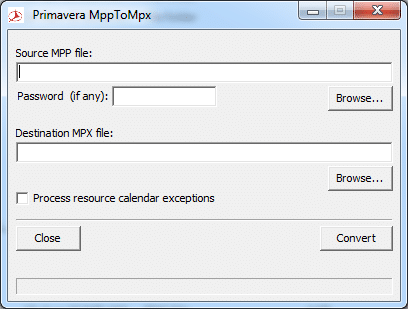Introduction: The Critical Path as a Game-Changer in Project Management
Every project, whether in construction, IT, infrastructure, or manufacturing, has a sequence of tasks that determines its overall duration. Delays in these tasks cause delays in the entire project. This is where the Critical Path Method (CPM) becomes invaluable.
The Critical Path is the longest sequence of dependent activities that dictates the shortest possible completion time. It provides project managers and planners with crucial insights to optimize schedules, allocate resources efficiently, and mitigate risks before they become costly delays.
But how can we leverage CPM effecIntroduction: The Critical Path as a Game-Changer in Project Management

This article provides a highly detailed, professional-level guide on:
✅ Understanding CPM concepts and calculations
✅ Implementing CPM in Primavera P6
✅ Case study of a real-world project
✅ The strategic value of CPM in project management
Let’s dive in. 🚀
📌 1. Understanding the Critical Path Method (CPM)
✅ Definition:
The Critical Path represents the longest sequence of dependent tasks in a project. If any activity on the critical path is delayed, the entire project completion is delayed.
🎯 Core Elements of CPM

📌 Formula to Identify the Critical Path:
Critical Path = Longest Path in the Project Schedule (Total Float = 0 days)
Project Duration = Sum of Activity Durations on the Critical Path
📌 2. Implementing Critical Path in Primavera P6
Primavera P6 is a powerful enterprise-level scheduling tool widely used for complex project planning. Below is a step-by-step guide to defining the Critical Path in Primavera P6.
🛠 Step 1: Define the Work Breakdown Structure (WBS)
Break the project into structured work packages (foundation, structure, finishing, MEP, etc.).
Example: For a construction project, the WBS may include:
Site Preparation
Foundation Work
Structural Work
Finishing & MEP
🛠 Step 2: Define Activities
Under each WBS element, define specific activities.
Example: Under Foundation Work, we may have:
Excavation
Concrete Pouring
Curing & Formwork Removal
🛠 Step 3: Establish Activity Dependencies
Assign logical relationships (Finish-to-Start, Start-to-Start, Finish-to-Finish, Start-to-Finish).
Example:
Excavation → Concrete Pouring (Finish-to-Start relationship)
🛠 Step 4: Assign Durations & Schedule the Project
Example:
Excavation: 5 days
Concrete Pouring: 7 days
Curing: 10 days
Go to « Project » → « Dates », define the start date, and click « Schedule » (F9).
🛠 Step 5: Identify the Critical Path
Go to « Gantt Chart » → Customize Layout → Select Total Float.
Activities with Total Float = 0 are on the Critical Path.
🛠 Step 6: Analyze & Optimize the Schedule
Use Primavera P6 tools to shorten the Critical Path:
✅ Fast-Tracking: Overlapping activities to reduce project duration.
✅ Crashing: Allocating extra resources to shorten time.
✅ Logic Optimization: Adjusting dependencies to streamline execution.
📌 3. Case Study: Applying Critical Path in a Real Construction Project
🛠 Project: High-Rise Office Construction
🔹 Duration: 180 days
🔹 Software Used: Primavera P6
🔹 Key Activities:
Site Preparation (10 Days)
Excavation (15 Days)
Foundation (20 Days)
Structural Framing (40 Days)
Roofing & External Cladding (25 Days)
MEP Installation (30 Days)
Interior Finishing (35 Days)
Final Inspection & Handover (5 Days)
🛠 Step 1: Define Dependencies
Site Preparation → Excavation (Finish-to-Start)
Excavation → Foundation (Finish-to-Start)
Foundation → Structural Work (Finish-to-Start)
🛠 Step 2: Run the Schedule in Primavera P6
Critical Path Identified:
🔴 Excavation → Foundation → Structural Work → Roofing → Finishing → Handover
🛠 Step 3: Project Delay & Recovery Plan
Problem: Excavation delayed by 5 days due to heavy rainfall.
✅ Solution: Applied « Fast-Tracking » by starting Foundation work in parallel with the final stages of excavation.
✅ Outcome: Saved 4 days of delay, reducing impact on final delivery.
📌 4. The Strategic Value of CPM in Project Management
🔹 A. Improved Decision-Making
✅ Real-time insights into project schedules allow managers to identify bottlenecks and adjust work sequences.
🔹 B. Better Resource Management
✅ CPM ensures efficient allocation of manpower, materials, and equipment, reducing downtime and waste.
🔹 C. Risk Mitigation
✅ Scenario analysis using CPM helps predict potential delays & risks before they escalate.
🔹 D. Enhanced Project Monitoring & Control
✅ CPM integrates with Earned Value Management (EVM) to track schedule & cost performance indices (SPI & CPI).
🔹 E. Competitive Advantage
✅ On-time project completion enhances company reputation, financial performance, and stakeholder trust.
🏁 Conclusion: Why Mastering CPM is Essential for Every Project Professional
The Critical Path Method (CPM) is a powerful project control tool that provides clarity, efficiency, and control over project execution. When applied effectively in Primavera P6, it ensures:
✔ Accurate scheduling and forecasting
✔ Proactive delay management
✔ Optimized resource allocation
✔ Improved risk mitigation
📌 Are you currently using Primavera P6 for scheduling? What challenges have you faced in managing your Critical Path? Let’s discuss in the comments! 👇tively? With Primavera P6, project professionals can visualize, track, and manage the critical path dynamically, ensuring that projects remain on schedule and within budget.
This article provides a highly detailed, professional-level guide on:
✅ Understanding CPM concepts and calculations
✅ Implementing CPM in Primavera P6
✅ Case study of a real-world project
✅ The strategic value of CPM in project management
Let’s dive in. 🚀
📌 1. Understanding the Critical Path Method (CPM)
✅ Definition:
The Critical Path represents the longest sequence of dependent tasks in a project. If any activity on the critical path is delayed, the entire project completion is delayed.
🎯 Core Elements of CPM

📌 Formula to Identify the Critical Path:
Critical Path = Longest Path in the Project Schedule (Total Float = 0 days)
Project Duration = Sum of Activity Durations on the Critical Path
📌 2. Implementing Critical Path in Primavera P6
Primavera P6 is a powerful enterprise-level scheduling tool widely used for complex project planning. Below is a step-by-step guide to defining the Critical Path in Primavera P6.
🛠 Step 1: Define the Work Breakdown Structure (WBS)
Break the project into structured work packages (foundation, structure, finishing, MEP, etc.).
Example: For a construction project, the WBS may include:
Site Preparation
Foundation Work
Structural Work
Finishing & MEP
🛠 Step 2: Define Activities
Under each WBS element, define specific activities.
Example: Under Foundation Work, we may have:
Excavation
Concrete Pouring
Curing & Formwork Removal
🛠 Step 3: Establish Activity Dependencies
Assign logical relationships (Finish-to-Start, Start-to-Start, Finish-to-Finish, Start-to-Finish).
Example:
Excavation → Concrete Pouring (Finish-to-Start relationship)
🛠 Step 4: Assign Durations & Schedule the Project
Example:
Excavation: 5 days
Concrete Pouring: 7 days
Curing: 10 days
Go to « Project » → « Dates », define the start date, and click « Schedule » (F9).
🛠 Step 5: Identify the Critical Path
Go to « Gantt Chart » → Customize Layout → Select Total Float.
Activities with Total Float = 0 are on the Critical Path.
🛠 Step 6: Analyze & Optimize the Schedule
Use Primavera P6 tools to shorten the Critical Path:
✅ Fast-Tracking: Overlapping activities to reduce project duration.
✅ Crashing: Allocating extra resources to shorten time.
✅ Logic Optimization: Adjusting dependencies to streamline execution.
📌 3. Case Study: Applying Critical Path in a Real Construction Project
🛠 Project: High-Rise Office Construction
🔹 Duration: 180 days
🔹 Software Used: Primavera P6
🔹 Key Activities:
Site Preparation (10 Days)
Excavation (15 Days)
Foundation (20 Days)
Structural Framing (40 Days)
Roofing & External Cladding (25 Days)
MEP Installation (30 Days)
Interior Finishing (35 Days)
Final Inspection & Handover (5 Days)
🛠 Step 1: Define Dependencies
Site Preparation → Excavation (Finish-to-Start)
Excavation → Foundation (Finish-to-Start)
Foundation → Structural Work (Finish-to-Start)
🛠 Step 2: Run the Schedule in Primavera P6
Critical Path Identified:
🔴 Excavation → Foundation → Structural Work → Roofing → Finishing → Handover
🛠 Step 3: Project Delay & Recovery Plan
Problem: Excavation delayed by 5 days due to heavy rainfall.
✅ Solution: Applied « Fast-Tracking » by starting Foundation work in parallel with the final stages of excavation.
✅ Outcome: Saved 4 days of delay, reducing impact on final delivery.
📌 4. The Strategic Value of CPM in Project Management
🔹 A. Improved Decision-Making
✅ Real-time insights into project schedules allow managers to identify bottlenecks and adjust work sequences.
🔹 B. Better Resource Management
✅ CPM ensures efficient allocation of manpower, materials, and equipment, reducing downtime and waste.
🔹 C. Risk Mitigation
✅ Scenario analysis using CPM helps predict potential delays & risks before they escalate.
🔹 D. Enhanced Project Monitoring & Control
✅ CPM integrates with Earned Value Management (EVM) to track schedule & cost performance indices (SPI & CPI).
🔹 E. Competitive Advantage
✅ On-time project completion enhances company reputation, financial performance, and stakeholder trust.
🏁 Conclusion: Why Mastering CPM is Essential for Every Project Professional
The Critical Path Method (CPM) is a powerful project control tool that provides clarity, efficiency, and control over project execution. When applied effectively in Primavera P6, it ensures:
✔ Accurate scheduling and forecasting
✔ Proactive delay management
✔ Optimized resource allocation
✔ Improved risk mitigation
📌 Are you currently using Primavera P6 for scheduling? What challenges have you faced in managing your Critical Path? Let’s discuss in the comments! 👇
Our latest articles
How to Convert Microsoft Project (MSP) to Primavera P6 (MPP to MPX Format)
Introduction When migrating project schedules from Microsoft Project (MSP) to Oracle Primavera P6, one of the biggest challenges is ensuring…
Understanding the DCMA 14-Point Schedule Assessment: A Guide for Primavera P6 Users
Introduction In complex projects, an accurate and reliable schedule is critical for on-time and on-budget delivery. However, not all schedules…
Mastering the Critical Path Method (CPM) in Project Management: A Comprehensive Guide with Primavera P6
Introduction: The Critical Path as a Game-Changer in Project Management Every project, whether in construction, IT, infrastructure, or manufacturing, has…



